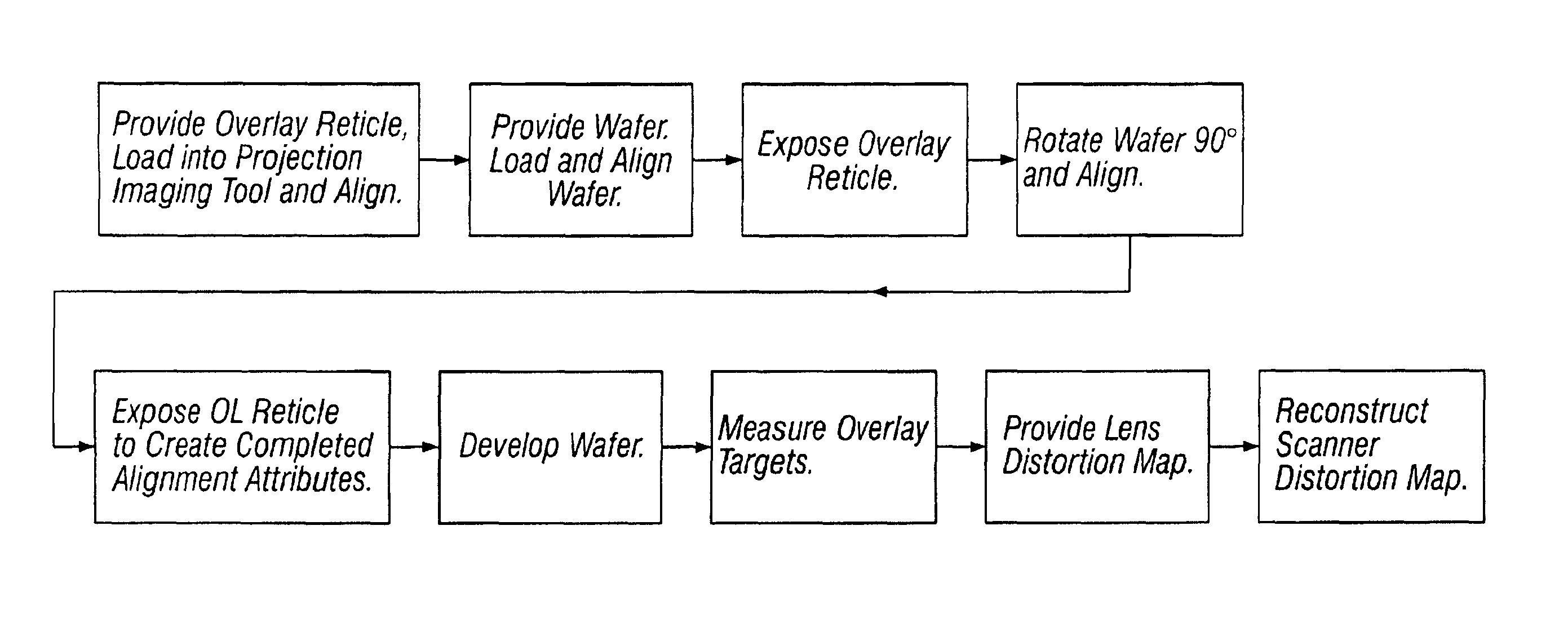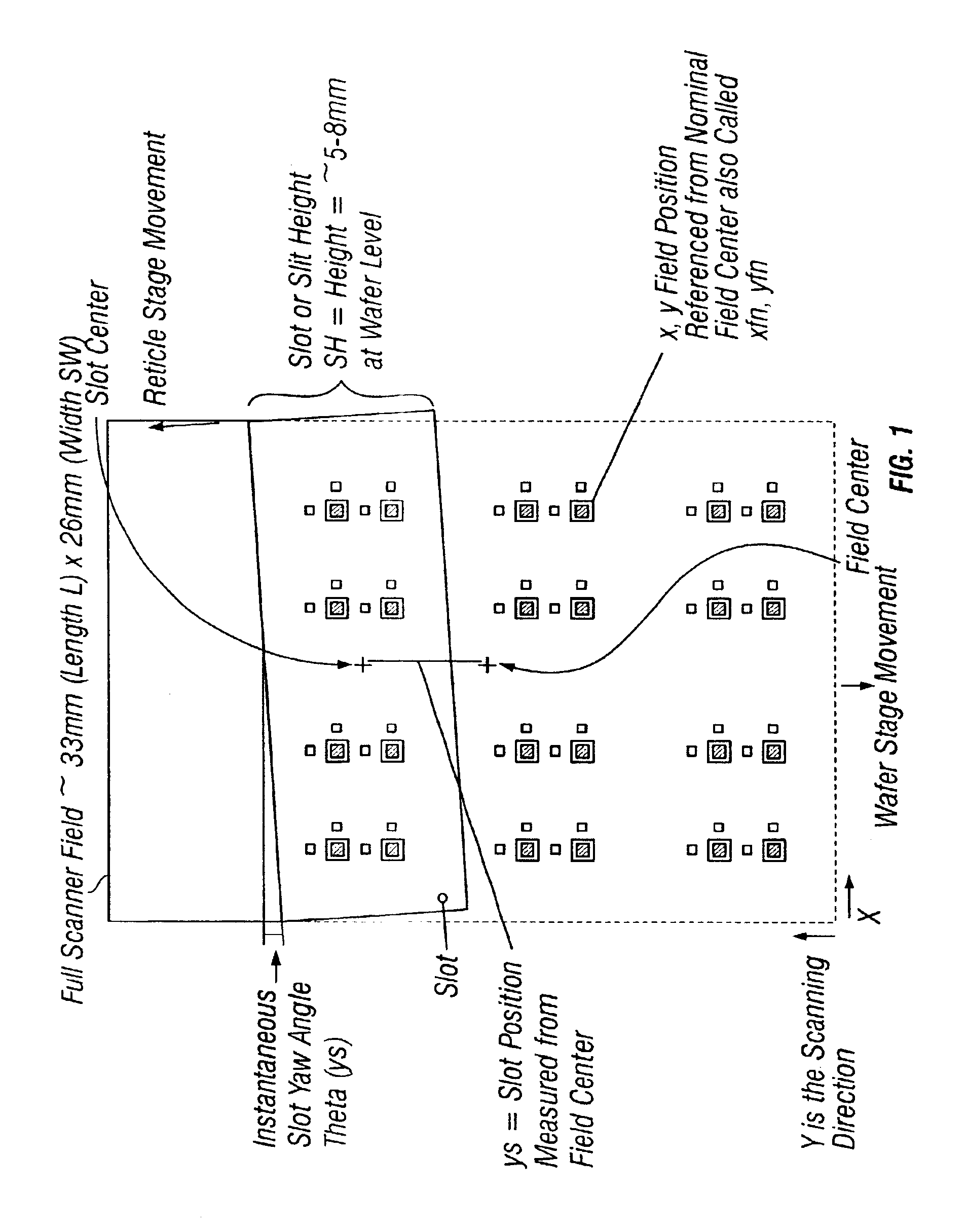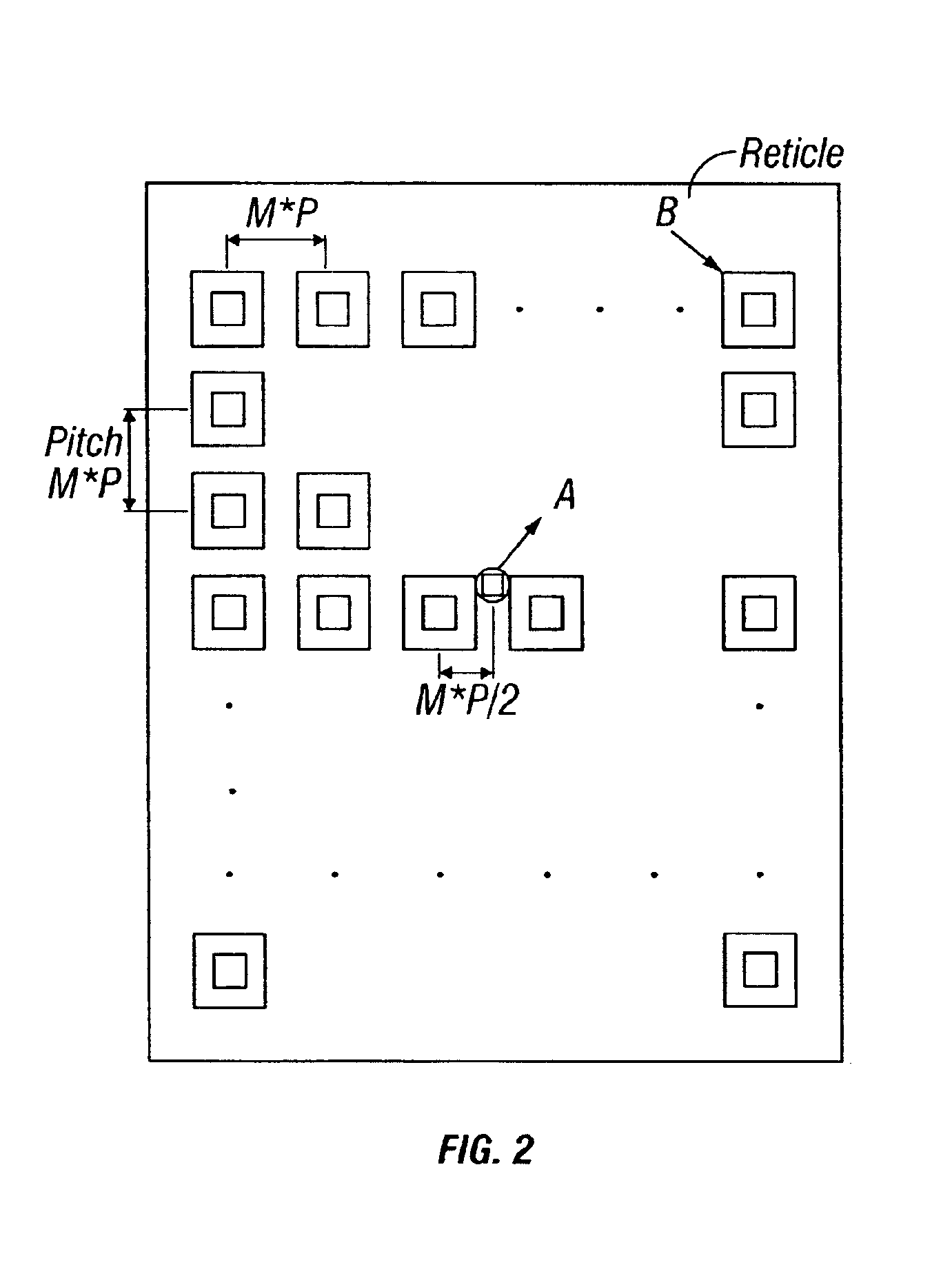Method and apparatus for self-referenced dynamic step and scan intra-field scanning distortion
a dynamic step and scanning technology, applied in the field of semiconductor manufacturing, can solve the problems of affecting the accuracy of the alignment accuracy of the exposure tool system, affecting the performance of the photolithographic system, and affecting the calibration procedure of the exposure tool,
- Summary
- Abstract
- Description
- Claims
- Application Information
AI Technical Summary
Benefits of technology
Problems solved by technology
Method used
Image
Examples
first embodiment
A FIRST EMBODIMENT
[0092]A method for determining the distortion associated with scanner synchronization error (scan error for short) to within a translation, rotation, and skew in the presence of scanner lens distortion is described. The process flow for the first embodiment is diagramed in FIG. 12.
Provide Reticle
[0093]Referring to FIG. 6, a reticle, OL, with an (Mx×My) array of overlay groups, OG, is provided, loaded into a projection lithography tool (machine) being Measuring, and aligned to reticle alignment mark RM. Reticle OL, shown in cross section in FIG. 11, may be a glass or fused silica reticle with a chrome coating that defines the overlay groups, OG; it is a binary mask. FIGS. 7 and 9 show realizations of OG for the first embodiment. They both consist of alignment attributes, AA, and complementary alignment attributes, AA′, offset from AA a distance M*dp. When overlaid one on top of another, AA and M′ form completed alignment attributes, CAA, illustrated in FIGS. 8 and 1...
second embodiment
[0123]Instead of the reticle of FIG. 6, this invention could be carried out with the reticle layout of FIG. 13. It too consists of an Mx×My array of overlay groups OG on regular pitch M*p″ the only difference being in the details of the overlay group. Now overlay group OG consists of alignment attribute AA and only a single complementary alignment attribute, AA′, offset from it in a single direction. An example of an overlay group with this structure is shown in FIG. 21. There a dark field reticle design consists of outer bar alignment attribute AA and the complementary alignment attribute consists of an inner bar alignment attribute AA′. Reticle dimensions suitable for an M=4 or 5 reduction imaging lithography tool are shown. FIG. 22 shows how projected overlapped overlay groups OLAP1, OLAP2 and OLAP of FIG. 18 would appear when the overlay group of FIG. 21 is utilized. Lower, CAAL, and upper, CAAU, completed alignment attributes are also indicated. The dark areas correspond to exp...
third embodiment
[0124]In this case, the overlay groups OG of reticle OL (FIG. 6) consist of a pair of wafer alignment marks. Referring to FIG. 23, overlay group OG consists of alignment attribute AA and offset from it is complementary alignment attribute AA′. AA is a wafer alignment mark, WAM0, suitable for use by a lithography tool wafer alignment system and stage when the wafer is in the nominal or 0 degree position. AA′ is a wafer alignment mark, WAM90, which is wafer alignment mark WAM0 rotated by 90 degrees in a clockwise direction. FIG. 24 shows how projected overlapped overlay groups OLAP1, OLAP2 and OLAP of FIG. 18 would appear when the overlay group of FIG. 23 is utilized. Lower, CAAL, and upper, CAAU, completed alignment attributes are also indicated. The exposure steps of the preferred embodiment must be altered is an obvious way so the wafer pattern results in the projected overlapped overlay groups OLAP1, OLAP2 and OLAP of FIG. 24. The other step that differs in detail is that of measu...
PUM
| Property | Measurement | Unit |
|---|---|---|
| distances | aaaaa | aaaaa |
| distances | aaaaa | aaaaa |
| size | aaaaa | aaaaa |
Abstract
Description
Claims
Application Information
 Login to View More
Login to View More - R&D
- Intellectual Property
- Life Sciences
- Materials
- Tech Scout
- Unparalleled Data Quality
- Higher Quality Content
- 60% Fewer Hallucinations
Browse by: Latest US Patents, China's latest patents, Technical Efficacy Thesaurus, Application Domain, Technology Topic, Popular Technical Reports.
© 2025 PatSnap. All rights reserved.Legal|Privacy policy|Modern Slavery Act Transparency Statement|Sitemap|About US| Contact US: help@patsnap.com



